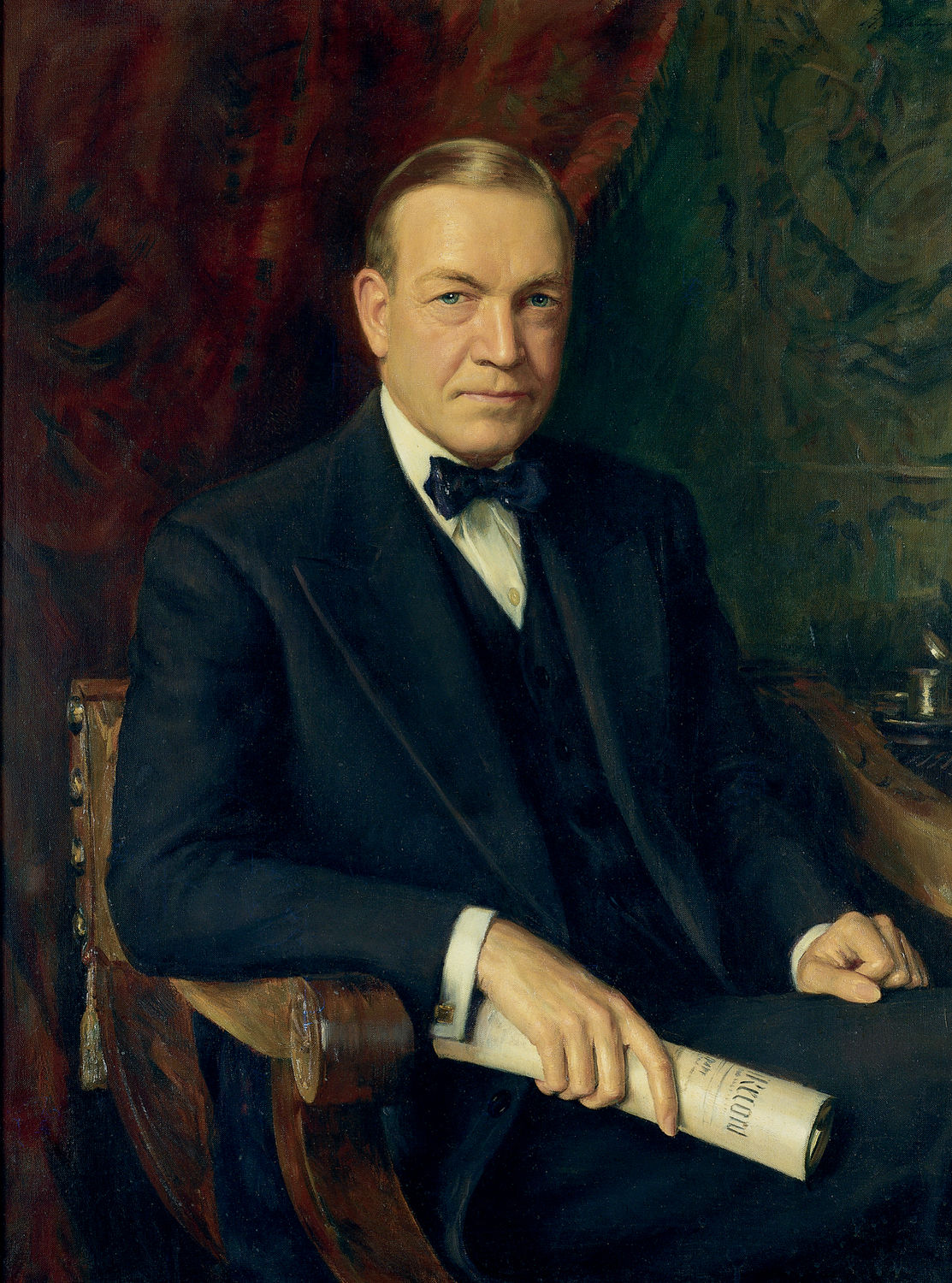
| Title | Charles L. McNary |
| Artist/Maker | Henrique Medina ( 1901 - 1988 ) |
| Date | 1946 |
| Medium | Oil on canvas |
| Dimensions | Sight: h. 39.5 x w. 29.5 in. (h. 100.33 x w. 74.93 cm)
Framed: h. 51.5 x w. 41.75 in. (h. 130.81 x w. 106.045 cm) |
| Credit Line | U.S. Senate Collection |
| Accession Number | 32.00012.000 |
According to Senator Charles McNary’s widow, Cornelia Morton McNary, the governor of Oregon appointed a committee to select an appropriate portrait of her husband for presentation to the Senate. Portuguese artist Henrique Medina was chosen to create an oil on canvas likeness, working from photographs of the subject. Although the painting was installed in the Capitol in 1944, it is dated two years later. This discrepancy was not noted in the period documentation, and the reason for the later date remains a mystery. A 1980 Portuguese catalogue of Medina’s work featured the McNary portrait, and specifically commented on the subject’s hands, calling them “fine, sensitive, and cultivated, lending themselves to a psychological study.” [1] Medina’s portraits of Americans distinguished in business, government, education, and entertainment are held in numerous public and private collections in this country and throughout Europe.
1. Ramiro Guedes de Campos, Dívida de Portugal a Henrique Medina (Trofa, Portugal: D.J. Pereira, 1979), 87.
Charles Linza McNary served as minority leader of the U.S. Senate between 1933 and 1944. Born in Marion County, Oregon, and educated in law, McNary was appointed to the Senate to fill vacancies in 1917 and 1918. The following year he won election in his own right. McNary rose to prominence in 1926 as chairman of the Senate Committee on Agriculture and Forestry. A strong supporter of farm interests, he cosponsored the McNary-Haugen bill, which called for shipment of American surplus farm products abroad to help raise prices. Congress passed the bill, but President Calvin Coolidge vetoed it. Still, McNary-Haugen laid the groundwork for later federal farm assistance programs.
As Republican leader of the Senate, McNary seldom made formal speeches but excelled as a behind-the-scenes negotiator. He supported much of the Franklin Roosevelt administration's early legislation. In turn, McNary won the president's support for construction of the Bonneville project, the federal dam and electric generating station on the Columbia River at Bonneville, Oregon. Later, however, McNary helped unite anti-New Deal forces of both parties in opposition to the so-called court-packing plan of 1937. His strategy not only helped to defeat the controversial plan, but also initiated a new coalition between Republicans and conservative Democrats that provided the first effective opposition to the New Deal. McNary became the Republican vice presidential candidate on the unsuccessful 1940 ticket headed by Wendell Willkie. His political career ended abruptly when he died following surgery in Florida in 1944.